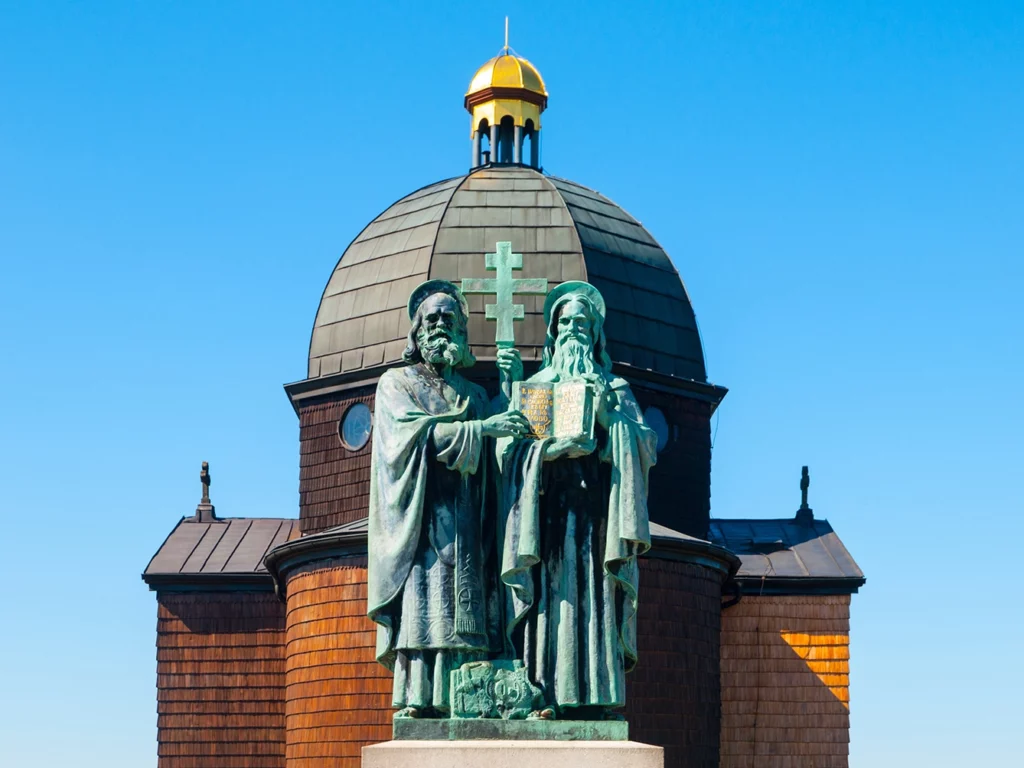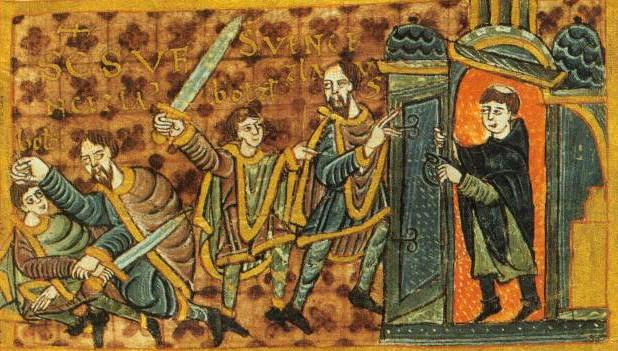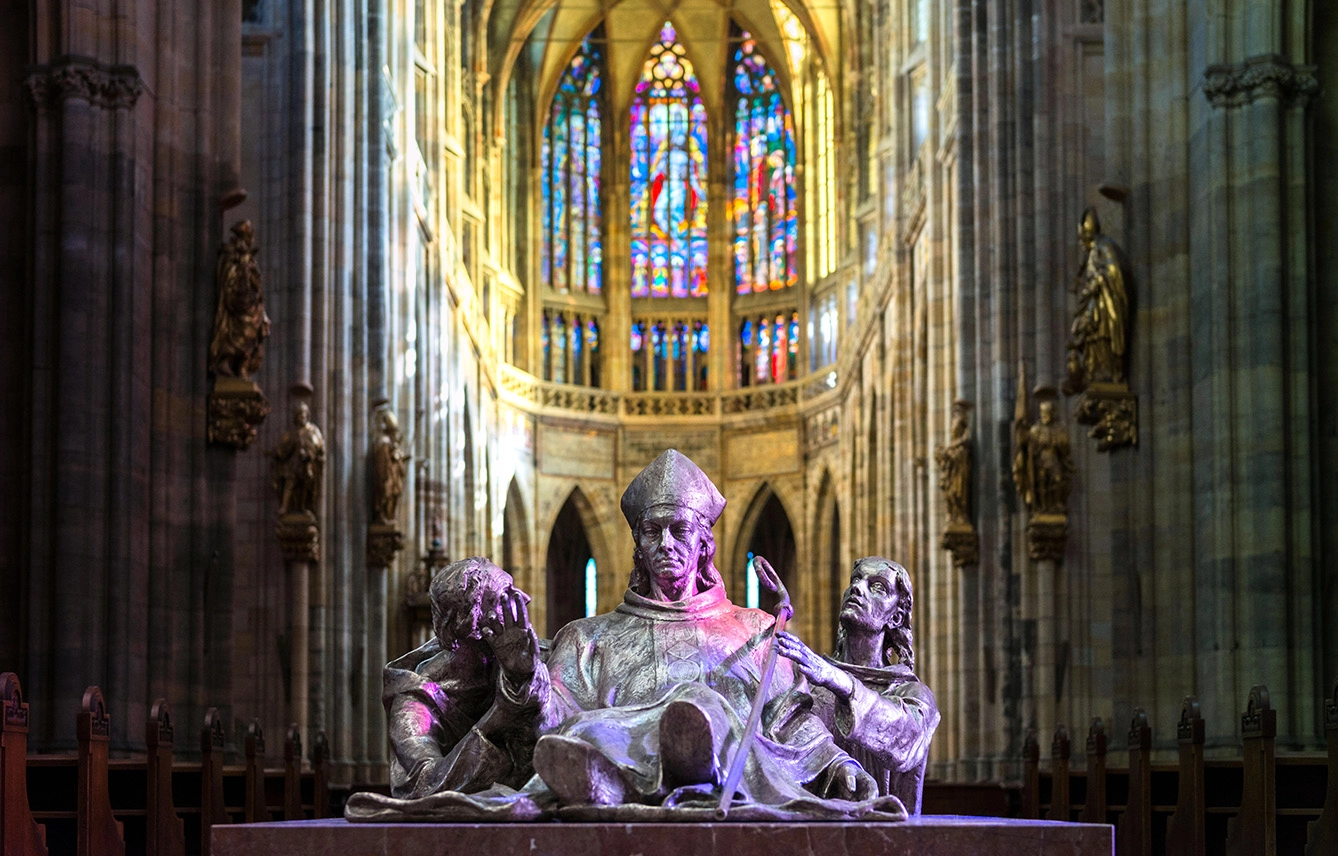It’s true! Multiple recent public opinion polls have shown that Czechia ranks as one of the most atheistic countries in Europe. It is surprising for a country with such a rich religious history: take the Hussite Uprising as an example.
The long list of Czech saints
Nevertheless, the history of the Czech nation overflows with stories of people whose destiny led them to an imaginary “Czech” Heaven. In total, there are seventeen. They have become the Saints and Patrons of the Czech Lands, and their stories inspire many. Here are the four most influential Saints representing the legacies of education, Christianity, and the Czech Republic.
Saints Cyril and Methodius – The Educators
The legend of Cyril and Methodius is the most famous Czech and Moravian legend. It tells the story of the Moravian Duke Rastislav, who sent a message from Moravia to Byzantine Emperor Michael III in 862. He begged the emperor to send someone who would lead the Czech people to education and faith. The emperor ordered the philosopher Constantine (Cyril) to take his brother Methodius (Metoděj) and go to Moravia, where they arrived a year later.

But Constantine and Methodius did not only come to preach the Christian faith; they brought the first Slavic alphabet, the first translation of the New Testament into Old Slavonic, and the Old Slavonic liturgy. And most importantly, the newly appointed Moravian Archbishop Methodius baptized Bohemian Duke Bořivoj, officially Christianizing the Czech lands.
Saint Vojtěch – The Overzealous Christian and the Founder
Bishop Vojtěch (usually known abroad as Adalbert) was one of the most educated men of his time. A missionary and a monk, Vojtěch traveled through most of Europe and thus learned the manners of the ordinary people of the early medieval times. He brought several brothers from a strict Roman monastery back home and founded the first-ever Benedictine monastery in Bohemia in 993 for them.
The legacy of St. Vojtěch’s love of knowledge still lives in the Břevnov Benedictine Monastery: its library holds 200,000 books from all over the world. A big part of it is available to visit, so next time you visit Prague, it’s a worthwhile spot to add to your list.
Saint Václav – The Patron of Czech Lands
Saint Václav (St. Wenceslaus) was one of six children. Among his notable virtues were his strong will, deep faith, and devotion to peace. The story goes that one day, St. Václav was invited to his brother’s residence to celebrate the feasts of St. Cosmas and Damian. After the service, he stayed with his brother Boleslaw and attended a banquet.

His close friend warned Václav that an assassination plan had been prepared against him. And indeed, early morning of 28 September 935, he died at the hands of his brother Boleslaw’s assassins, who killed him at the entrance to the church. Boleslaw had his brother Václav killed because of power disputes. St. Václav was hailed as a saint for his devotion to the faith and good deeds and became the primary patron of the Czech lands.
On top of all that, there is a magnificent statue of St. Václav at central Wenceslas Square in Prague. And the medieval “Saint Wenceslas Chorale” was considered a possible Czech National Anthem.
Heaven for Saints or heaven for atheists?
Historically, Czech lands were a very religious region. But 40 years of Communist rule changed all that. Communists were strict opposers of religion. The faith suffered, with thousands of clergy arrested, many executed, and churches closed. But the statistics are not that dim.
There are still over 7 000 churches and chapels across Czechia. With almost 3 000 other religion-connected buildings, there are roughly 10 000 places of worship in the country. There are 42 registered churches (religions), and around 35% of the people state that they are believers.
Many then say they are atheists yet believe in some “Higher Power.” For these people, the existence of God is just too abstract to follow. For the rest, organized religion is internally forbidden: a heritage from the communist times.
Despite not being Czechs by birth, Cyril and Methodius were always considered Czech Saints by the Czechs. You could say they were “adopted” by the Czech nation for everything they did. In their memory, a national holiday is celebrated on 5 July, when St. Cyril and St. Methodius arrived in the Moravia region.”







